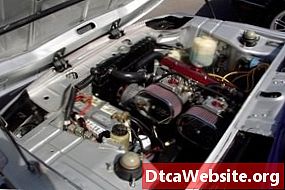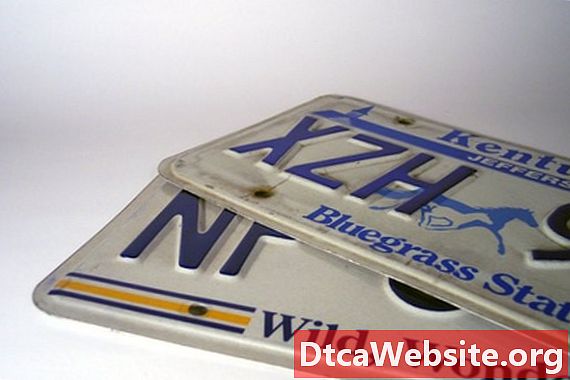
Contenu
- Antenna Length
- Antenna Placement and Grounding
- Enhancing Reception Power
- Diversity Tuning and Satellite Radio

In his day, the brilliant -- some say, mad -- scientist Nikola Tesla had a vision: to fill the entire world with energy, so that powering anything was as simple as reaching out with a metal pole and pulling electricity out of thin air. While Teslas idea might seem a little crazy now, in a very real way were living in exactly the energy-filled world he imagined. No matter where you go, the air is absolutely brimming with electrical energy in the form of radio waves, and catching them isnt much more difficult than our mad genius proposed way back in 1892.
Antenna Length
Have you ever wondered why car antennas are the length that they are, or why walkie-talkie and cell-phone antennas are so stubby? It has to do with the wavelengths of radio. In order to "catch" a particular wavelength of radio energy from the air, an antenna works best if its exactly as tall as the wavelength is long. Or, if thats not an option, then half or a quarter as tall. Car antennas are usually calibrated to "quarter-length" for the frequencies theyre designed to pick up. Too long usually doesnt hurt, but too short can seriously affect radio reception. For optimal FM radio reception through the lowest end of the radio range, your antenna should be a full 32 inches long. If the antenna is any shorter than 26 inches, its effectively useless for civilian FM radio bands.
Antenna Placement and Grounding
Ideally, your antenna should be as far away from the engine compartment as possible. The many electrical devices under your hood will throw off interference in the form of electrical inductance fields, which will hit your antenna and induce an electrical signal in it. This signal will come through the radio as anything from a background hiss or static, to harsh popping or buzzing. Automobile ignition systems are notorious for throwing off just this kind of interference, especially those with long, unshielded spark plug wires. This is why most new cars have the antenna on the fender, near the trunk. You want the antenna as far up as possible for the greatest possible range. Once you have it on, youll need to attach the antennas ground wire to a solid ground. This is vitally important. Use thick, audio-system-quality ground wire, and connect it to a heavy, unpainted metal chassis component -- preferably the frame. Make sure you have solid metal-to-metal contact between the loop on the ground cable, the mounting bolt and the grounding point.
Enhancing Reception Power
One of the go-to solutions for most is a simple powered pre-amplifier or signal booster. These devices work just like the amplifier that you use to power your speakers, taking a weak signal from the antenna and amplifying it before it gets to your radio. Theyre usually simple to install, simply screwing in line between the antenna cable and radio. Hook the amplifier up to a 12-volt power source, and youre good to go. Some car stereos have powerful pre-amps built into them, but most dont. An amplifier will greatly increase your radios range, but it will also allow it to more easily pick up on unwanted interference. So, proper shielded cable is a must, and so is keeping the amp away from the stereo head unit. If you find yourself picking up interference from the engine bay after using a pre-amp, try grounding the hood and inner fenders to the chassis with a length of 12-guage wire and a couple of sheetmetal screws. This will form a partial "Faraday cage," trapping unwanted signals before they get to your antenna.
Diversity Tuning and Satellite Radio
Theres also a system out there known as "diversity tuning," which uses a pair of antennas on the front and rear. A computer rapidly switches back and forth between the antenna with the best signal, which enhances "multipath rejection." Multipath is the swishing, rushing or static sound you hear when driving around large buildings, and can make FM radios almost useless in large cities. The same thing happens with satellite radio, which is even more prone to interference around large buildings because the small satellite radio antennas need a direct line of sight to the satellite. You can also use a pair of satellite radio antennas, but theres no guarantee theyll work any better around skyscrapers. All of the aforementioned principles apply to satellite radio as well, but there often isnt much you can do aside from installing a better antenna as high up on the outside of the vehicle as possible. Outside antennas always work best, since you dont have to worry about the roof blocking your signal.


